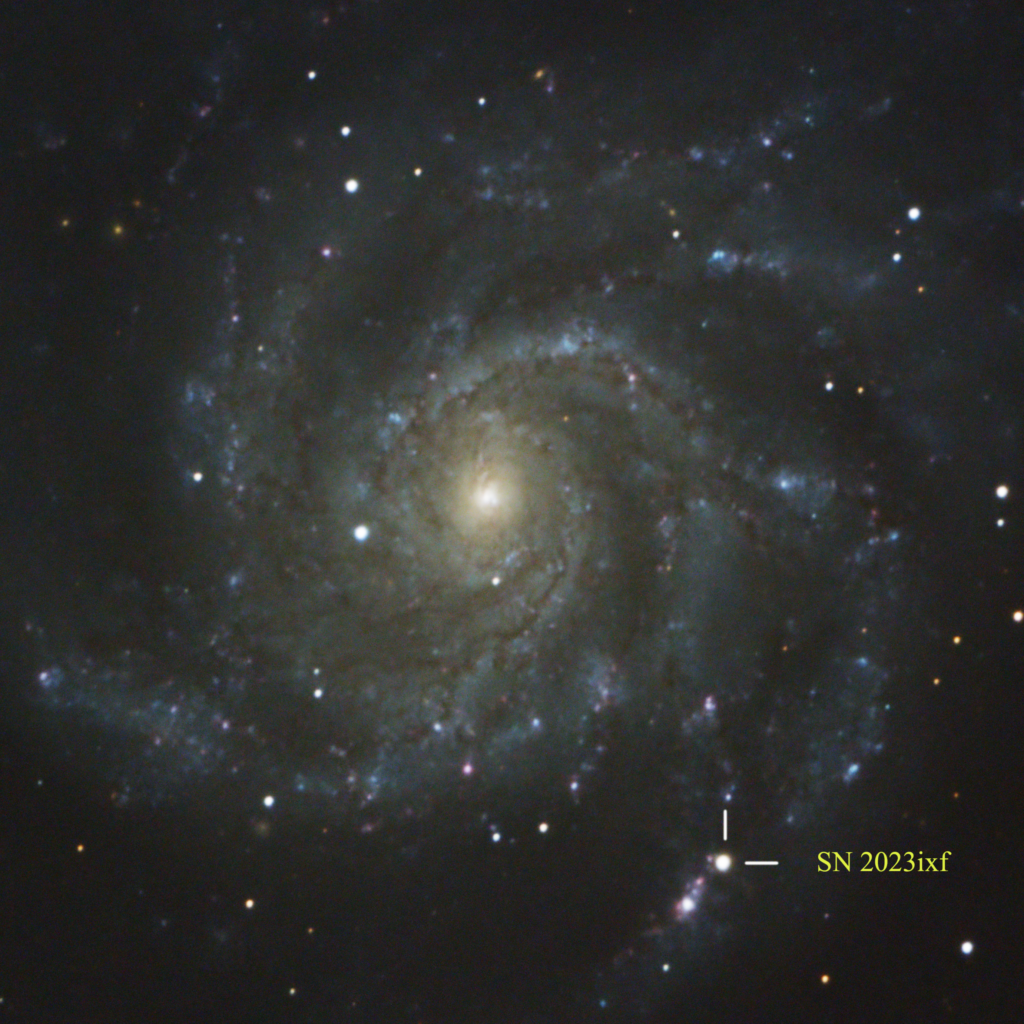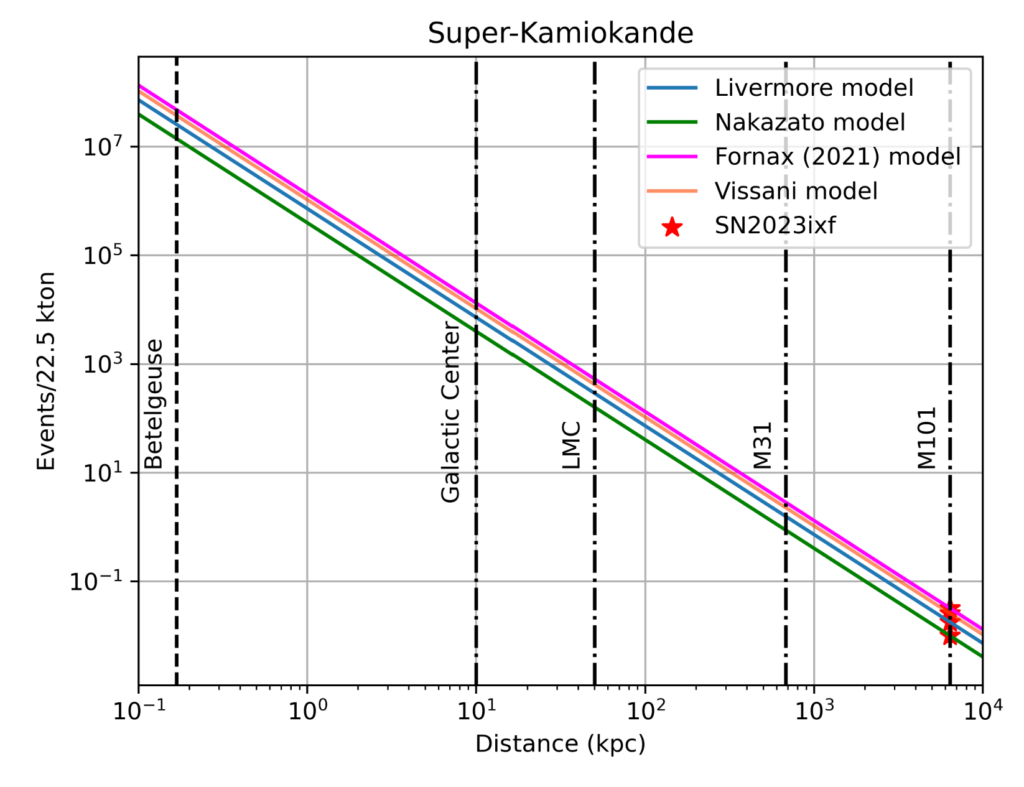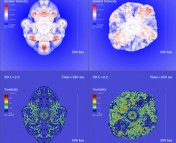Paper Title: Low and High Energy Neutrinos from SN 2023ixf in M101
Authors: Dafne Guetta, Aurora Langella, Silvia Gagliardini, Massimo Della Valle
First Author Institution: Physics Department, Ariel University, Ariel, Israel
Status: Accepted to ApJL, open access on arXiv
On May 19, 2023, astronomers witnessed a nearby bright supernova, SN 2023ixf, in M101 (the Pinwheel Galaxy). The supernova is a Type II supernova, a core-collapse supernova which comes from the deaths of stars with a mass greater than 8 solar masses.
Although certainly bright in light, supernovae are 10,000 times brighter in neutrinos – 99% of the energy released in a supernova is radiated away in neutrinos (often denoted by the Greek letter ν or “nu”). In 1987, 25 neutrinos were detected from a supernova (SN 1987A) in the Large Magellanic Cloud. This supernova became the first confirmed multi-messenger source, seen in both light and neutrinos, which gave us valuable new information about supernovae.

This new bright supernova, SN 2023ixf, although further away from us than the first supernova detected in neutrinos, provides an exciting opportunity to probe the supernova explosion. Today’s authors model low-energy and high energy neutrinos from this supernova, and discuss what this means for our understanding of Type II supernovae.
Low-energy neutrinos
They first investigate low-energy neutrinos, in the same energy range observed from SN 1987A, which might be seen by the Super-Kamiokande (Super-K) detector located in Japan. Super-K is a 50,000 ton tank filled with water, with 13,000 photo-multiplier tubes (PMTs) covering the sides of the tank. When a neutrino interacts with the water, it produces a small amount of light that can be detected with these PMTs.
The authors test 4 different models for neutrino emission from supernovae to look at how many events could be seen with Super-K for a supernova similar to SN 2023ixf at various distances. The results can be seen in Figure 1. For this supernova in M101, the models predict less than 0.1 neutrinos, meaning that the supernova likely isn’t detectable with Super-K.
The Super-K team searched for neutrinos from this supernova, but reported no significant detection, which supports the conclusions drawn in the paper.

There is also an upcoming upgrade to Super-K (called Hyper-Kamiokande), which will have a detector with a volume 8 times larger than that of Super-K, as well as upgrades to the sensors. The authors also consider Hyper-K, but still find that this supernova would likely not be detectable by Hyper-K.
High-energy neutrinos
In a type-II supernova, when the core of the star collapses to a neutron star, it retains its hydrogen envelope, and although it launches jets of high energy particles, these jets cannot escape the star (because of this, these are called “choked” jets). In these jets, particles are accelerated and can interact with nearby photons to produce neutrinos.
These neutrinos would be high energy, and could be seen by the IceCube Neutrino Observatory. IceCube detects neutrinos in a similar way to Super-K, using PMTs to detect the light from neutrino interactions, but they use Antarctic ice instead of water, and the spacing of the PMTs is sensitive to higher energy neutrinos.
The authors consider several factors in their model to determine how many neutrinos could be seen by IceCube, including the duration of the jet, the kinetic energy of the jet, if the jet is relativistic, and a few others. The authors report that for most of the model parameters tested, assuming all of the kinetic energy is used to accelerate protons, there should be more than 10 neutrinos observed.
IceCube searched for neutrinos from this supernova, but also did not see a significant detection. Using this observational constraint, the authors are able to say that either only a small fraction (less than about 10%) of the kinetic energy is used to accelerate particles, the jet lasts a long time, or it is highly relativistic.
What about future supernovae?
The models presented in this paper provide interesting implications for future supernovae. For a Galactic supernova (a supernova within the Milky Way) or close nearby, Super-K and Hyper-K should be able to see hundreds or thousands of events, and for the case of Betelgeuse, they could see more than 10,000,000 events! Were there to be another nearby supernova, it might be possible to see both high and low energy neutrinos, and to better understand the conditions at play near the newly born neutron star.
Astrobite edited by: Aldo Panfichi
Featured image credit: Juan Lacruz, CC BY-SA 4.0, via Wikimedia Commons




